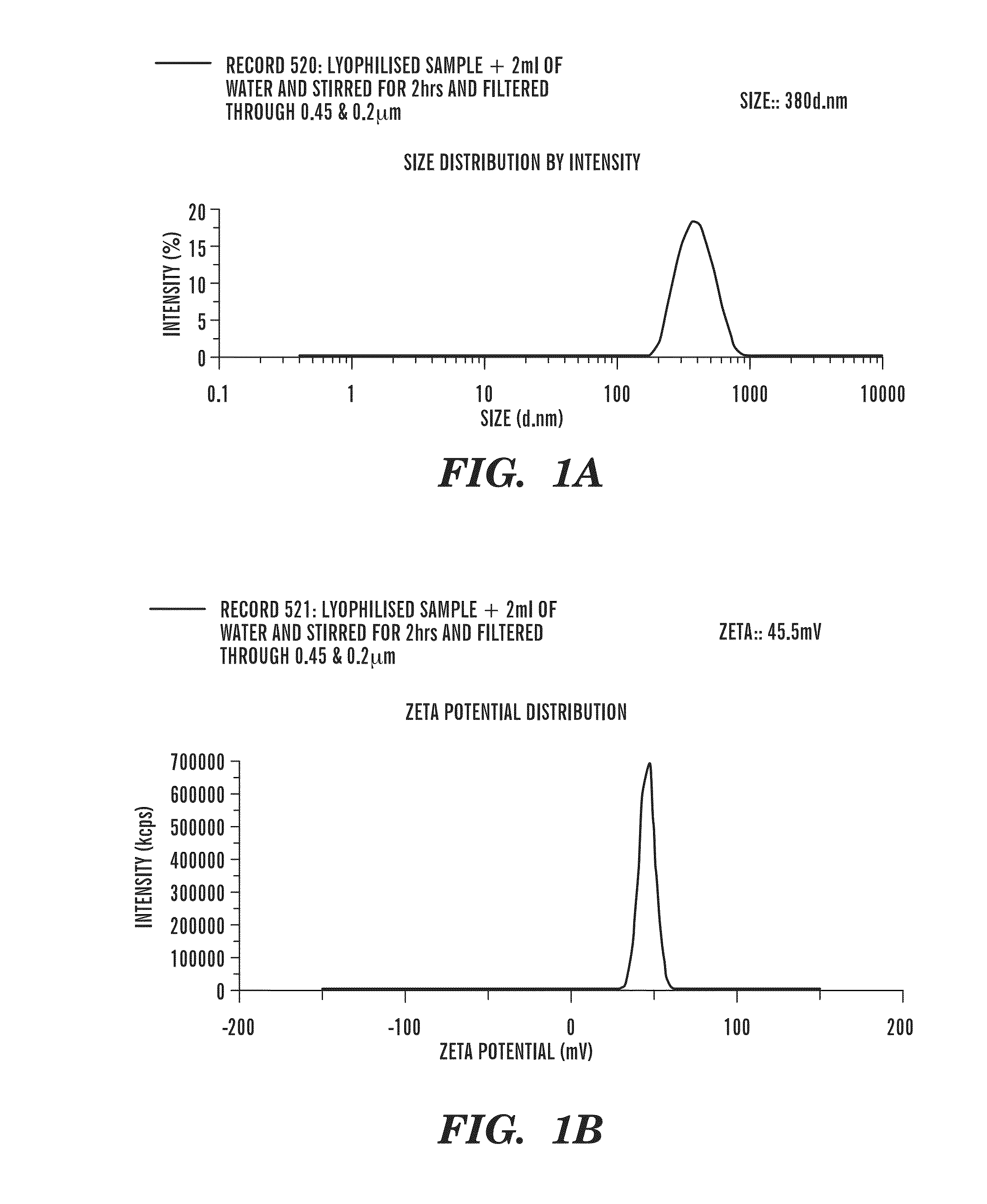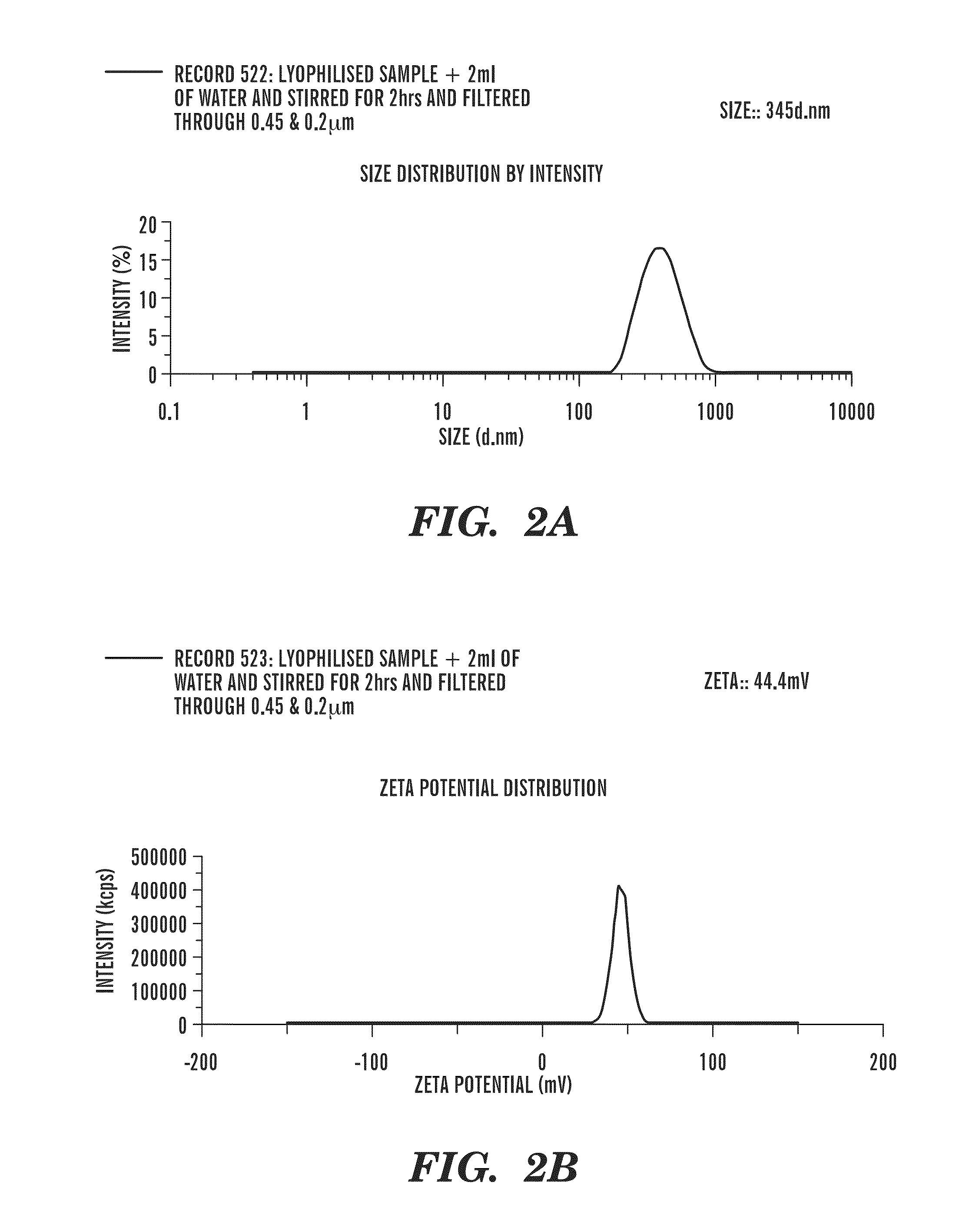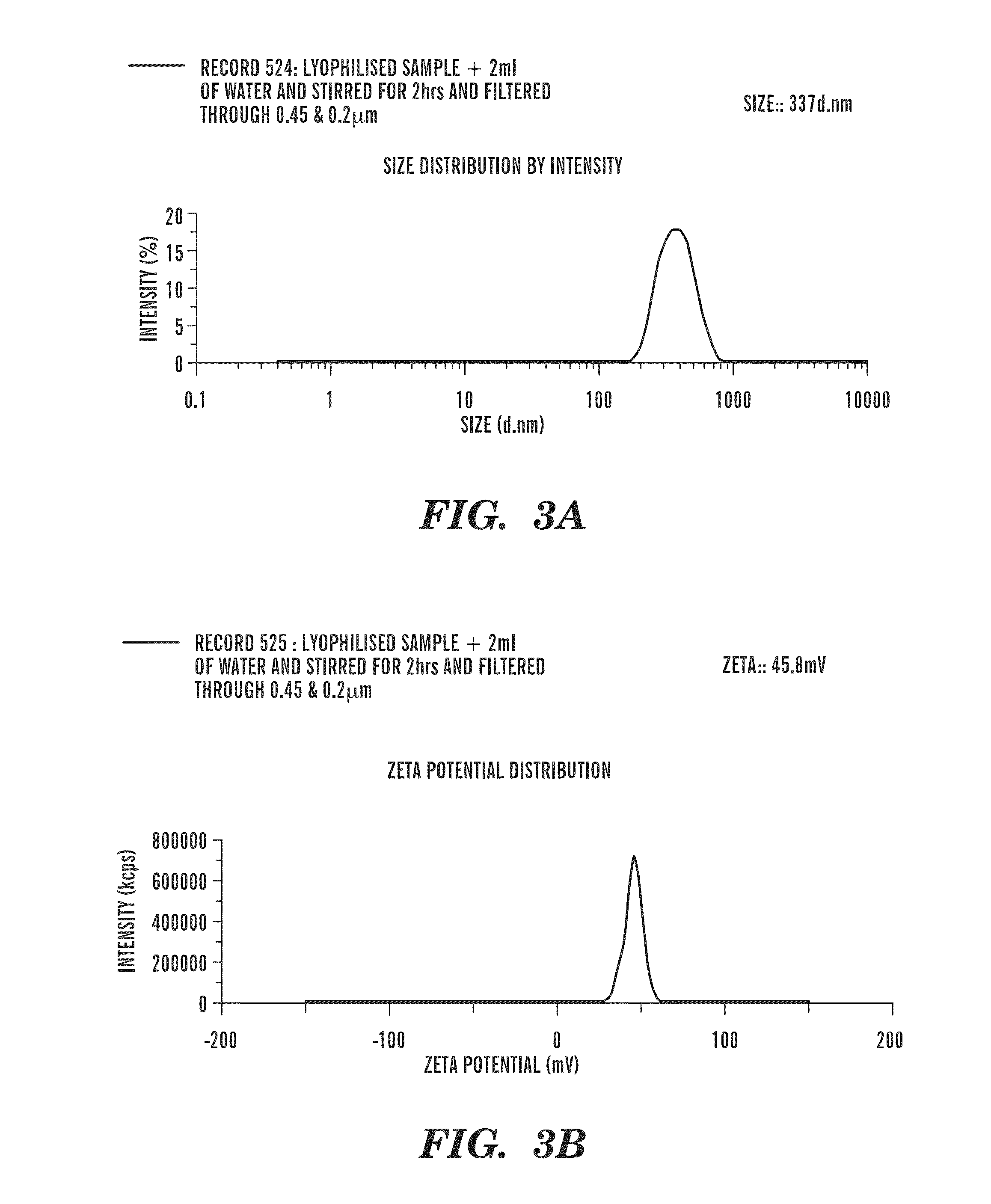Formulations of Factor VIIa inhibitors and utility
a technology of factor viia and inhibitors, applied in the field of formulations of factor viia inhibitors and utility, can solve the problems of increased pressure, increased heart workload, and increased abnormal or pathological angiogenesis
- Summary
- Abstract
- Description
- Claims
- Application Information
AI Technical Summary
Benefits of technology
Problems solved by technology
Method used
Image
Examples
synthesis examples
Example 1
Synthesis of Factor VIIa Inhibitors or Factor VIIa Inhibitors-NO Donor Encapsulated Nanoparticles
[0120]Nanoparticles encapsulating Factor VIIa inhibitors of the present invention are produced using a reverse micelle method where chitosan polymer and Factor VIIa inhibitors or Factor VIIa inhibitors. NO donors are added to Dimethysulfoxide (DMSO) and surfactant solution to form reverse micelles. Bifunctional reagent gluteraldehyde is added to this reverse micelles system as a cross-linking agent. The chemical cross-linking of poly L-arginine polymers with gluteraldehyde occurs by Schiff's reaction of aldehyde group on gluteraldehyde and amino group on the chitosan chain. Finally nanoparticles are separated out by high speed centrifugation.
example 2
Synthesis of Poly L-arginine—PLGA Nanoparticles
[0121]Factor VIIa inhibitors or Factor VIIa inhibitors-NO donor PLA-PLGA hybrid nanoparticles are prepared according to the same scheme shown in Example 1.
example 3
Synthesis of Hydrophobic Poly L-Arginine with Site Directed Delivery to Pulmonary Tissues
[0122]Conjugation of ligand to the integrin αvβ3 such as cyclic N-Methyl-Arginine-Glycine-Aspartic acid (N-ME-Arg-Gly-Asp), and other known high affinity ligands to αv integrin
PUM
| Property | Measurement | Unit |
|---|---|---|
| pressure | aaaaa | aaaaa |
| pressure | aaaaa | aaaaa |
| diameter | aaaaa | aaaaa |
Abstract
Description
Claims
Application Information
 Login to View More
Login to View More - R&D
- Intellectual Property
- Life Sciences
- Materials
- Tech Scout
- Unparalleled Data Quality
- Higher Quality Content
- 60% Fewer Hallucinations
Browse by: Latest US Patents, China's latest patents, Technical Efficacy Thesaurus, Application Domain, Technology Topic, Popular Technical Reports.
© 2025 PatSnap. All rights reserved.Legal|Privacy policy|Modern Slavery Act Transparency Statement|Sitemap|About US| Contact US: help@patsnap.com



